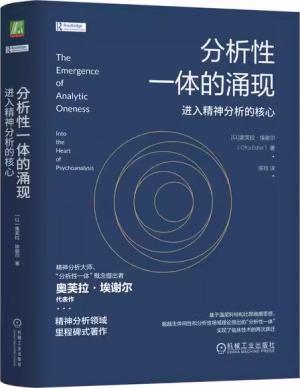新書推薦:

《
血色帝国:近代英国社会与美洲移民
》
售價:HK$
58.2

《
海外中国研究·王羲之:六朝贵族的世界(艺术系列)
》
售價:HK$
178.1

《
唐宋绘画史 全彩插图版
》
售價:HK$
98.6

《
海洋、岛屿和革命:当南方遭遇帝国(文明的另一种声音)
》
售價:HK$
106.4

《
铝合金先进成型技术
》
售價:HK$
266.6

《
英雄之旅:把人生活成一个好故事
》
售價:HK$
87.4

《
分析性一体的涌现:进入精神分析的核心
》
售價:HK$
122.1

《
火枪与账簿:早期经济全球化时代的中国与东亚世界
》
售價:HK$
77.3
|
| 編輯推薦: |
|
观测宇宙主要靠光。对于光的分析,光谱分析至关重要。另外,对于分子和原子物理学的研究对光谱分析也是必不可少的。《天文光谱学——天文光谱的原子与分子物理学导论(第二版)英文影印版》综合了两方面的知识,是相关领域研究不可多得的佳作。
|
| 內容簡介: |
对于宇宙的观测,其信息几乎都来自于光。观测一方面要把光分解成各种成分,另一方面也要了解原子和分子的性质。《天文光谱学——天文光谱的原子与分子物理学导论(第二版)英文影印版》对于这两方面都进行了系统讲述。在天文光谱学的研究中,本书能够提供丰富而实用的知识。
《天文光谱学——天文光谱的原子与分子物理学导论(第二版)英文影印版》适合天文学领域的研究者和研究生阅读。
|
| 目錄:
|
Preface v
1. Why Record Spectra of Astronomical Objects? 1
1.1 A Historical Introduction . . . . . . . . . . . . . . . . . . . 1
1.2 What One Can Learn from Studying Spectra . . . . . . . . 3
2. The Nature of Spectra 7
2.1 Transitions . . . . . . . . . . . . . . . . . . . . . . . . . . . . 7
2.2 Absorption and Emission . . . . . . . . . . . . . . . . . . . 8
2.3 Other Measures of Transition Probabilities . . . . . . . . . 10
2.4 Stimulated Emission . . . . . . . . . . . . . . . . . . . . . . 10
2.5 Optical Depth . . . . . . . . . . . . . . . . . . . . . . . . . . 11
2.6 Critical Density . . . . . . . . . . . . . . . . . . . . . . . . . 12
2.7 Wavelength or Frequency? . . . . . . . . . . . . . . . . . . . 13
2.8 The Electromagnetic Spectrum . . . . . . . . . . . . . . . . 14
3. Atomic Hydrogen 17
3.1 Overview . . . . . . . . . . . . . . . . . . . . . . . . . . . . . 17
3.2 The Schr ¨odinger Equation of Hydrogen-Like Atoms . . . . 17
3.3 Reduced Mass . . . . . . . . . . . . . . . . . . . . . . . . . . 18
3.4 Atomic Units . . . . . . . . . . . . . . . . . . . . . . . . . . 19
3.5 Wavefunctions for Hydrogen . . . . . . . . . . . . . . . . . 20
3.6 Energy Levels and Quantum Numbers . . . . . . . . . . . 21
3.7 H-Atom Discrete Spectra . . . . . . . . . . . . . . . . . . . . 23
3.8 H-Atom Spectra in Different Locations . . . . . . . . . . . . 29
3.8.1 Balmer series . . . . . . . . . . . . . . . . . . . . . . 29
3.8.2 Lyman series . . . . . . . . . . . . . . . . . . . . . . 33
3.8.3 Infrared lines . . . . . . . . . . . . . . . . . . . . . . 35
3.9 H-Atom Continuum Spectra . . . . . . . . . . . . . . . . . . 35
3.9.1 Processes . . . . . . . . . . . . . . . . . . . . . . . . 35
3.9.2 H-atom emission in HII regions . . . . . . . . . . . 36
3.10 Radio Recombination Lines . . . . . . . . . . . . . . . . . . 38
3.11 Radio Recombination Lines for Other Atoms . . . . . . . . 40
3.12 Angular Momentum Coupling in the Hydrogen Atom . . 43
3.13 The Fine Structure of Hydrogen . . . . . . . . . . . . . . . . 44
3.14 Hyperfine Structure in the H Atom . . . . . . . . . . . . . . 45
3.15 Allowed Transitions . . . . . . . . . . . . . . . . . . . . . . 46
3.16 Hydrogen in Nebulae . . . . . . . . . . . . . . . . . . . . . . 47
4. Complex Atoms 51
4.1 General Considerations . . . . . . . . . . . . . . . . . . . . 51
4.2 Central Field Model . . . . . . . . . . . . . . . . . . . . . . . 52
4.3 Indistinguishable Particles . . . . . . . . . . . . . . . . . . . 54
4.4 Electron Configurations . . . . . . . . . . . . . . . . . . . . 55
4.5 The Periodic Table . . . . . . . . . . . . . . . . . . . . . . . 56
4.6 Ions . . . . . . . . . . . . . . . . . . . . . . . . . . . . . . . . 58
4.7 Angular Momentum in Complex Atoms . . . . . . . . . . . 59
4.7.1 L-S or Russell-Saunders coupling . . . . . . . . . . 59
4.7.2 j-j coupling . . . . . . . . . . . . . . . . . . . . . . . 61
4.7.3 Why two coupling schemes? . . . . . . . . . . . . . 61
4.8 Spectroscopic Notation . . . . . . . . . . . . . . . . . . . . . 62
4.9 Parity of the Wavefunction . . . . . . . . . . . . . . . . . . . 63
4.10 Terms and Levels in Complex Atoms . . . . . . . . . . . . . 64
5. Helium Spectra 69
5.1 He I and He II Spectra . . . . . . . . . . . . . . . . . . . . . . 69
5.2 Selection Rules for Complex Atoms . . . . . . . . . . . . . 71
5.3 Observing Forbidden Lines . . . . . . . . . . . . . . . . . . 74
5.4 Grotrian Diagrams . . . . . . . . . . . . . . . . . . . . . . . 75
5.5 Potential Felt by Electrons in Complex Atoms . . . . . . . . 77
5.6 Emissions of Helium-Like Ions . . . . . . . . . . . . . . . . 78
6. Alkali Atoms 81
6.1 Sodium . . . . . . . . . . . . . . . . . . . . . . . . . . . . . . 81
6.2 Spin-Orbit Interactions . . . . . . . . . . . . . . . . . . . . . 84
6.3 Fine Structure Transitions . . . . . . . . . . . . . . . . . . . 88
6.4 Astronomical Sodium Spectra . . . . . . . . . . . . . . . . . 89
6.5 Other Alkali Metal-Like Spectra . . . . . . . . . . . . . . . . 93
7. Spectra of Nebulae 99
7.1 Nebulium . . . . . . . . . . . . . . . . . . . . . . . . . . . . 100
7.2 The Bowen Mechanism . . . . . . . . . . . . . . . . . . . . . 104
7.3 Two Valence Electrons . . . . . . . . . . . . . . . . . . . . . 107
7.4 Autoionisation and Recombination . . . . . . . . . . . . . . 109
8. Spectra in Magnetic Fields 115
8.1 Uniform Magnetic Field . . . . . . . . . . . . . . . . . . . . 116
8.2 Strong Magnetic Field . . . . . . . . . . . . . . . . . . . . . 117
8.3 Weak Magnetic Field . . . . . . . . . . . . . . . . . . . . . . 118
8.3.1 The normal Zeeman effect . . . . . . . . . . . . . . 118
8.3.2 The anomolous Zeeman effect . . . . . . . . . . . . 119
8.4 Spectra in Magnetic Field . . . . . . . . . . . . . . . . . . . 120
9. X-Ray Spectra 123
9.1 Inner Shell Processes . . . . . . . . . . . . . . . . . . . . . . 123
9.2 The Solar Corona . . . . . . . . . . . . . . . . . . . . . . . . 127
9.3 The Structure of Highly Ionised Atoms . . . . . . . . . . . 127
9.4 Isotope Effects . . . . . . . . . . . . . . . . . . . . . . . . . . 131
10. Molecular Structure 135
10.1 The Born-Oppenheimer Approximation . . . . . . . . . . . 136
10.2 Electronic Structure of Diatomics . . . . . . . . . . . . . . . 137
10.2.1 Labelling of electronic states . . . . . . . . . . . . . 140
10.2.2 Symmetry . . . . . . . . . . . . . . . . . . . . . . . . 141
10.2.3 State labels . . . . . . . . . . . . . . . . . . . . . . . 143
10.3 Schr ¨odinger Equation . . . . . . . . . . . . . . . . . . . . . 144
10.3.1 Nuclear motion in diatomic molecules . . . . . . . 144
10.4 Fractionation . . . . . . . . . . . . . . . . . . . . . . . . . . . 149
10.5 Vibration-Rotation Energy Levels . . . . . . . . . . . . . . 150
10.6 Temperature Effects . . . . . . . . . . . . . . . . . . . . . . . 152
10.6.1 Rotational state populations . . . . . . . . . . . . . 152
10.6.2 Vibrational state populations . . . . . . . . . . . . . 154
10.6.3 Electronic state populations . . . . . . . . . . . . . 155
11. Rotational Spectra 157
11.1 Rotational Structure of Polyatomic Molecules . . . . . . . . 157
11.2 Selection Rules: Pure Rotational Transitions . . . . . . . . . 160
11.3 Selection Rules . . . . . . . . . . . . . . . . . . . . . . . . . 161
11.4 Isotope Effects . . . . . . . . . . . . . . . . . . . . . . . . . . 166
11.5 Rotational Spectra of Other Molecules . . . . . . . . . . . . 166
11.6 Rotational Spectra of Molecular Hydrogen . . . . . . . . . 170
11.7 Maser Emissions . . . . . . . . . . . . . . . . . . . . . . . . 170
12. Vibration-Rotation Spectra 175
12.1 Vibrations in Polyatomic Molecules . . . . . . . . . . . . . 175
12.2 Vibrational Transitions . . . . . . . . . . . . . . . . . . . . . 177
12.2.1 Structure of the spectrum . . . . . . . . . . . . . . . 178
12.2.2 Isotope effects . . . . . . . . . . . . . . . . . . . . . 181
12.2.3 Hydrogen molecule vibrational spectra . . . . . . . 181
12.3 Astronomical Spectra . . . . . . . . . . . . . . . . . . . . . . 183
13. Electronic Spectra of Diatomic Molecules 187
13.1 Electronic Transitions . . . . . . . . . . . . . . . . . . . . . . 187
13.2 Selection Rules . . . . . . . . . . . . . . . . . . . . . . . . . 188
13.2.1 Vibrational selection rules . . . . . . . . . . . . . . 189
13.2.2 Rotational selection rules . . . . . . . . . . . . . . . 190
13.3 Transition Frequencies . . . . . . . . . . . . . . . . . . . . . 192
13.4 Astronomical Spectra . . . . . . . . . . . . . . . . . . . . . . 193
13.5 Non-1_ Electronic States . . . . . . . . . . . . . . . . . . . . 195
Solutions to Model Problems 199
Further Reading and Bibliography 215
Index 217
|
|









